
views
X
Trustworthy Source
Cleveland Clinic
Educational website from one of the world's leading hospitals
Go to source
Follow along with us below to learn how to control your dreams using several different techniques, such as reality checking, Wake Back to Bed, and Mnemonic Induction of Lucid Dreams! We’ll also explain the benefits and potential consequences of controlling your dreams.
Controlling Dreams with Reality Checking

Ask yourself if you’re dreaming throughout the day. Make it a habit to ask yourself, "Am I awake, or am I dreaming?" several times every day. Spend a moment to take in your surroundings and notice if anything is out of place. The belief is that by making your reality checking a habit, you’re more likely to ask the question in your dreams. When you ask the question in a dream, you’ll realize you aren’t awake, allowing you to take control of your dream. Set an alarm or reminder on your phone for every 1 to 2 hours so you remember to do a reality check. When you reality check, pay attention to behaviors and situations that are impossible. For instance, trees can change colors and clocks can move backward in a dream, but they can’t in reality.
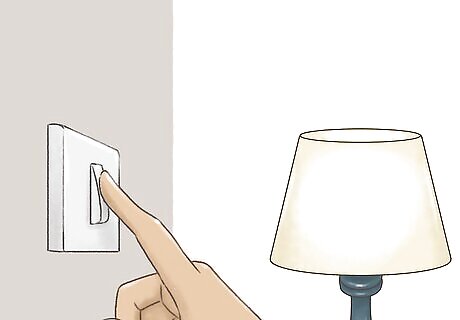
Do physical reality checks daily, like reading or turning on the lights. Physical tests are another way for you to make reality checks a habit and tell the difference between real life and dreams. For instance, make it a habit to read a sentence every few hours, close your eyes, and see if the sentence changes. In reality, the sentence won’t change. In your dreams, the words will change, allowing you to realize that you’re dreaming. Sleep medicine and psychiatry professional Dr. Alex Dimitriu says reading is a great reality check because “you can't read print in a dream.” So, when you catch yourself reading in a dream, “you can realize that you're sleeping.” Try other physical reality checks, like: Turning on a light switch: In real life, the lights come on. But in your dreams, nothing might happen or your hand might pass through the switch. Looking in the mirror: In reality, you’ll see your face looking back at you. In your dreams, your reflection might change or distort. Press your fingers into your hand: In real life, your fingers can’t pass through your palm. In your dreams, they might pass through or morph together.

Stay calm when you realize you’re dreaming so you don’t wake up. It’s super exciting when your reality check fails and you realize you’re dreaming. Try to contain your excitement so you don’t wake up and simply observe what’s happening in your dream. When you calm down, start changing and controlling the content of your dream. Start with small activities, like cooking food, jumping, climbing a ladder, or skateboarding. Simply imagine and concentrate on what you want to do or see. Gradually work your way up to bigger changes so you don’t accidentally wake yourself up. Use the same imagination and concentration technique to change the scenery in your dream, conjure up people and things, or fly.
Using the Wake Back to Bed Technique

Set an alarm to wake up about 5 hours after you fall asleep. The Wake Back to Bed (WBTB) technique helps you control your dreams by waking you up during your REM sleep cycle. This is the period of sleep where your brain is highly active and most vivid and lucid dreams occur. Simply set an alarm so you wake up about 5 hours into your sleep. It can take a lot of practice to control your dreams using the WBTB method. If you’re having trouble growing aware that you’re dreaming, change when you wake up. REM sleep typically occurs between 4 to 6 hours after you go to sleep.
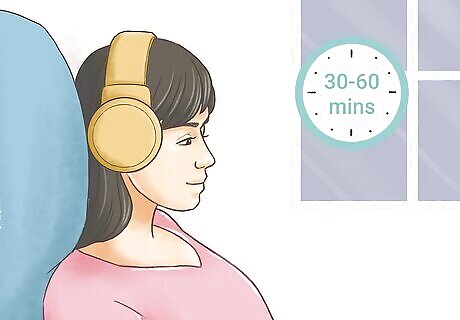
Stay up for 30 to 60 minutes, then go back to sleep. Read, listen to music, or do another calming activity when you wake up. After 30 to 60 minutes, relax and ease back into sleep. The belief is that by disrupting your REM cycle, you’ll dive back into your dreams and be aware that you’re dreaming. The WBTB technique is usually most effective when it’s combined with other dream controlling methods, like the Mnemonic Induction of Lucid Dreams (MILD).
Using Mnemonic Induction of Lucid Dreams

Wake up 5 hours after falling asleep. Before you go to bed, set an alarm to wake you up about 5 hours later. This ensures that you wake up during your REM sleep cycle, which is when most dreams occur. The Mnemonic Induction of Lucid Dreams (MILD) technique works similarly to the Wake Back to Bed method. By waking up during your REM sleep cycle, you’re likely to go straight back into dreaming when you fall asleep again.

Recite your intention to have a lucid dream as you fall back asleep. When you wake up, repeat a mantra like, “Next time I’m dreaming, I will remember I’m dreaming” or “When I start dreaming again, I’ll be aware I’m dreaming.” Just keep reciting the mantra and focusing on your intention as you relax and lull back to sleep. The MILD technique is believed to work through the power of suggestion. By setting your intention to have a lucid dream, you’re more likely to be aware that you’re dreaming when you fall back asleep. You might not grow aware that you’re dreaming on your first try with the MILD method. Just keep practicing each night until you do!
Keeping a Dream Journal to Control Dreams
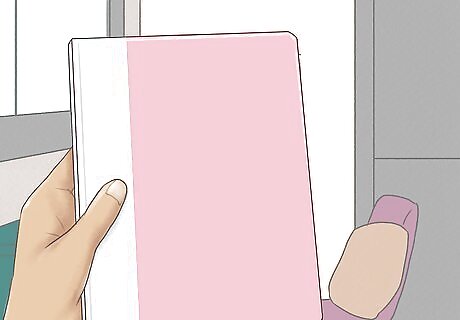
Write down your dreams as soon as you wake up. Keep a small journal by your bed and use it to jot down everything you remember about your dream in the morning. Be as specific as possible, focusing on what you were doing, what you saw, where you were, who you were with, and how you felt. Date each dream and note anything visually striking that you experienced. Write down if there were any conflicts or problems, too. Writing down your dreams trains your mind to better recall your dreams. This can help you grow aware that you’re dreaming.

Find common symbols, objects, and themes in your dreams. Interpret your dreams after you write them in your journal. Look for any repeating objects, people, symbols, or situations between your dreams. Being aware of the patterns in your dreams can help you notice specific symbols while you’re dreaming, triggering you to realize you’re dreaming. Reflecting on how the dream relates to emotions and situations you’re experiencing in your real life can also help you grow aware of your dreams. For instance, you might notice that a lot of your dreams feature a green frog. Knowing that frogs often show up in your dreams can help you look for them in your sleep and take control of your dreams.
Using the Wake-Induced Lucid Dreaming Method
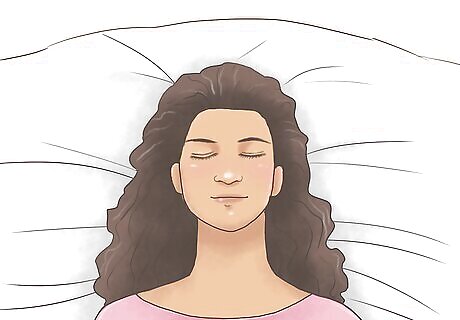
Lie still, close your eyes, and focus only on your breathing. The Wake-Induced Lucid Dreaming (WILD) method is a way to transition directly from being awake to being aware that you’re dreaming. Simply get comfortable in your bed, close your eyes, and relax your whole body. Practice deep breathing or count in your head to gradually shut out your other thoughts and enter a meditative state. Try other relaxation techniques to focus solely on your body and breathing, like doing progressive muscle relaxation or meditating.
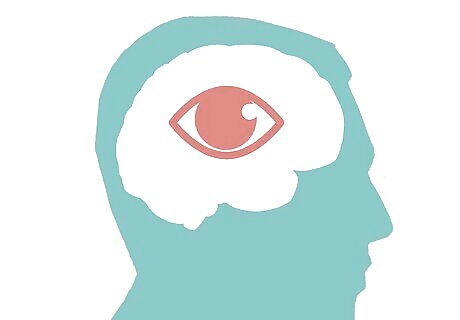
Enter a hypnagogic state by focusing on the images in your mind’s eye. The hypnagogic state is the stage of consciousness between being awake and being asleep. During this state, you typically see shifting shapes and colors and hear sounds. Take in and focus on the sensations you experience to enter deeper into the hypnagogic state. The WILD method is considered one of the hardest techniques to master. It can take a lot of practice to get into a hypnagogic state and stay focused, so don’t be discouraged if it doesn’t happen on your first try. Note: The WILD technique can sometimes lead to sleep paralysis, which is when you’re conscious but unable to move. You might experience hallucinations during sleep paralysis, which can be upsetting or scary. To get out of sleep paralysis, recognize that it’s happening and relax your body. Then, focus on wiggling your fingers or toes.
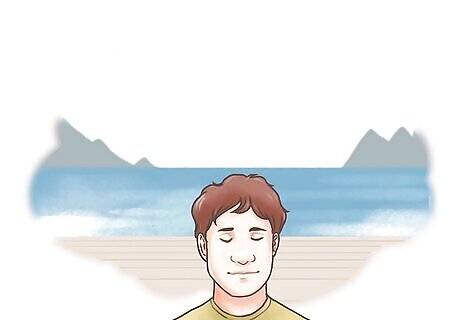
Start to shape your dream. When you’re deep in the hypnagogic state, focus on turning the shapes and colors you see into your dream world. Visualize where you want to be, what you want to see, and how you want to feel. With practice, the hypnagogic state can turn into your dream and allow you to control it.
Controlling Your Dreams Through Visualization

Write what you want to dream about before you go to sleep. Spend a few minutes before bed writing down what you want your dream to look like, what you want to do, where you want to go, and who or what you want to see. Get as detailed as possible and include even the smallest of things you want to experience. Read through your ideal dream a few times after you jot it down. Write down the plot or narrative you want to experience in the dream, too. Drawing pictures of how you want the dream to look is also super helpful. Telling yourself what you are going to experience when you dream can help you become aware of your dreaming state while you dream.
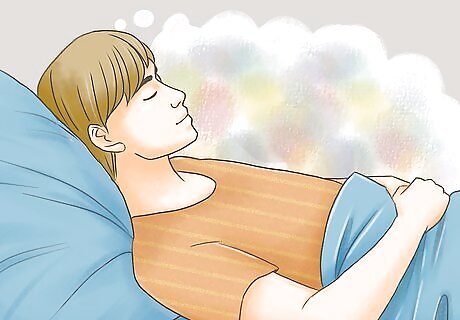
Lie down, close your eyes, and visualize your dream. In your mind's eye, picture yourself falling asleep and becoming aware that you’re dreaming. Then, walk through the dream you want to have. Use all of your senses to imagine the exact sequence of the dream as you wrote it down. To walk through your dream, imagine: The setting and objects you see. Add more details as you focus harder on the dream. The sounds you hear. Listen for sounds related to the setting you’re in or people you expect to talk to. What you physically feel. Visualize the feel of the ground, the sun on your skin, or any other sensations related to the dream. What you smell. Sniff the air to identify the smells related to the setting of the dream. How you mentally feel. Visualize yourself being relaxed, happy, excited, or however you expect to feel in the dream. Stay focused on your dream. As you visualize, your subconscious might create a lot of images that have nothing to do with your target dream.

Continue visualizing as you fall asleep. As you continue to imagine your dream and relax, you’re likely to fall asleep. With practice, visualizing your dream can help you directly enter it when you drift off and be aware that you’re dreaming. The visualization technique can lead to greater success at controlling your dreams when you combine it with the Wake-Induced Lucid Dreaming method.
Other Techniques to Control Your Dreams
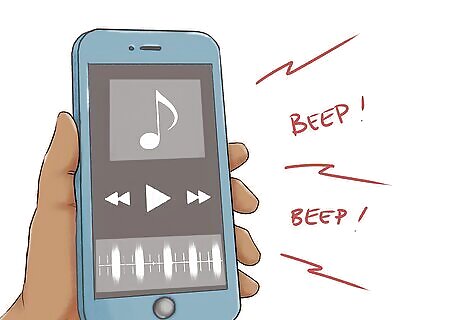
Trigger lucid dreams with lights or sounds. Throughout the day, flash a bright light in your face or play a beeping noise as you do a reality check. This trains your brain to associate a certain stimulus with the reality check. When you’re in REM sleep, flash the light or play the sound. This can cause you to become aware that you’re dreaming. You typically need a helper to use this method. Ask your partner or a friend to watch for rapid eye movements as you sleep, which means you’re in REM sleep. Then, have them flash the light or play the noise. Alternatively, use a lucid dreaming mask. Sleep medicine and psychiatry professional Dr. Alex Dimitriu says these masks “shine a gentle red light behind the eyelids when they detect rapid eye movement” which can “induce lucid dreaming.”
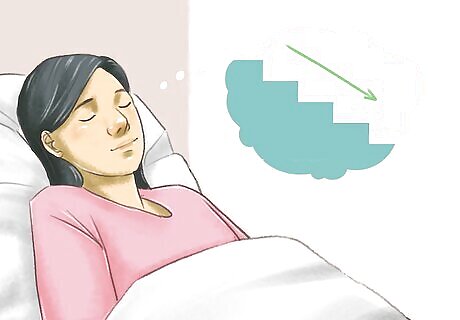
Use hypnosis to make yourself susceptible to lucid dreams. Get in bed, close your eyes, and imagine you’re going down a flight of stairs. With each step, relax a part of your body, starting with your head. When you get to your toes, recite a suggestion like, “I can control my dreams” or “I can remember and be aware of my dreams.” Or, search for a guided, self-hypnosis video to induce lucid dreams on YouTube. Alternatively, contact a hypnotherapist and ask them to hypnotize you. Hypnotizing yourself is a simple way to relax your body and make you more open to suggestions.

Sleep in a dark, cool room free of distractions. Getting 7 to 9 hours of good quality sleep can help increase your chances of controlling your dreams. Clean up your bedroom and avoid looking at your phone or watching TV about 1 hour before bed. Then, turn on a fan, shut off the lights, and get in bed. Getting daily exercise, drinking plenty of water, and eating healthily also help improve your sleep. Practicing relaxation techniques like yoga or meditation during the day or before bed can also benefit your sleep, as lower stress helps you sleep better. Avoid eating a heavy meal right before bed or going to sleep hungry, as this can disrupt your sleep. Besides being distracting and lowering your sleep quality, watching TV can influence your dreams and limit your ability to control them.
Benefits and Risks of Controlling Your Dreams
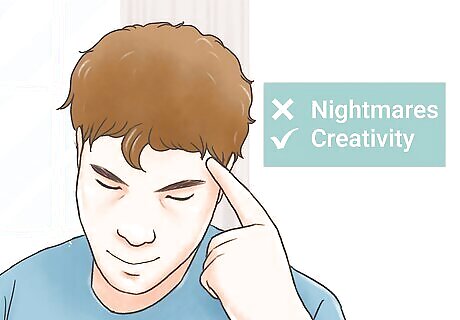
Lucid dreams can reduce nightmares and improve creativity. One of the greatest benefits of controlling your dreams is being able to change your nightmares into positive dreams, helping to reduce their frequency. Lucid dreaming can also help you develop creative ideas, problem-solve issues, and come up with solutions. Because nightmares can be a symptom of anxiety and mental health conditions like post-traumatic stress disorder, lucid dreaming can be used as a therapy to improve your mental health. Other studies have demonstrated that lucid dreaming can improve people’s performance of small motor tasks, like tapping their fingers. Many lucid dreamers report using their dreams to help them rehearse certain situations so they feel more confident in real life.

Controlling your dreams can disrupt your sleep. Certain techniques, like Wake Back to Bed and Mnemonic Induction of Lucid Dreams, cause you to wake up during your REM sleep cycle which can negatively impact your sleep quality. When you wake up, you might feel groggy and exhausted. Interrupting REM sleep can also make you feel irritated and depressed. If you are diagnosed with a sleep disorder, waking up during REM sleep can potentially make your disorder worse. Talk to your doctor before you start trying to lucid dream. Certain techniques, like Wake-Induced Lucid Dreaming (WILD), can lead to sleep paralysis. Some people report feelings of derealization after learning to control their dreams, which means they feel like the world around them isn’t real.














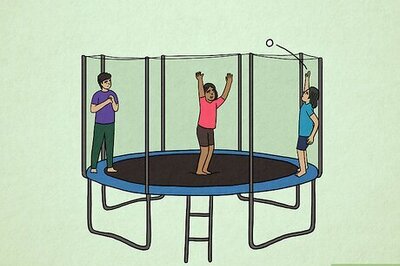
Comments
0 comment